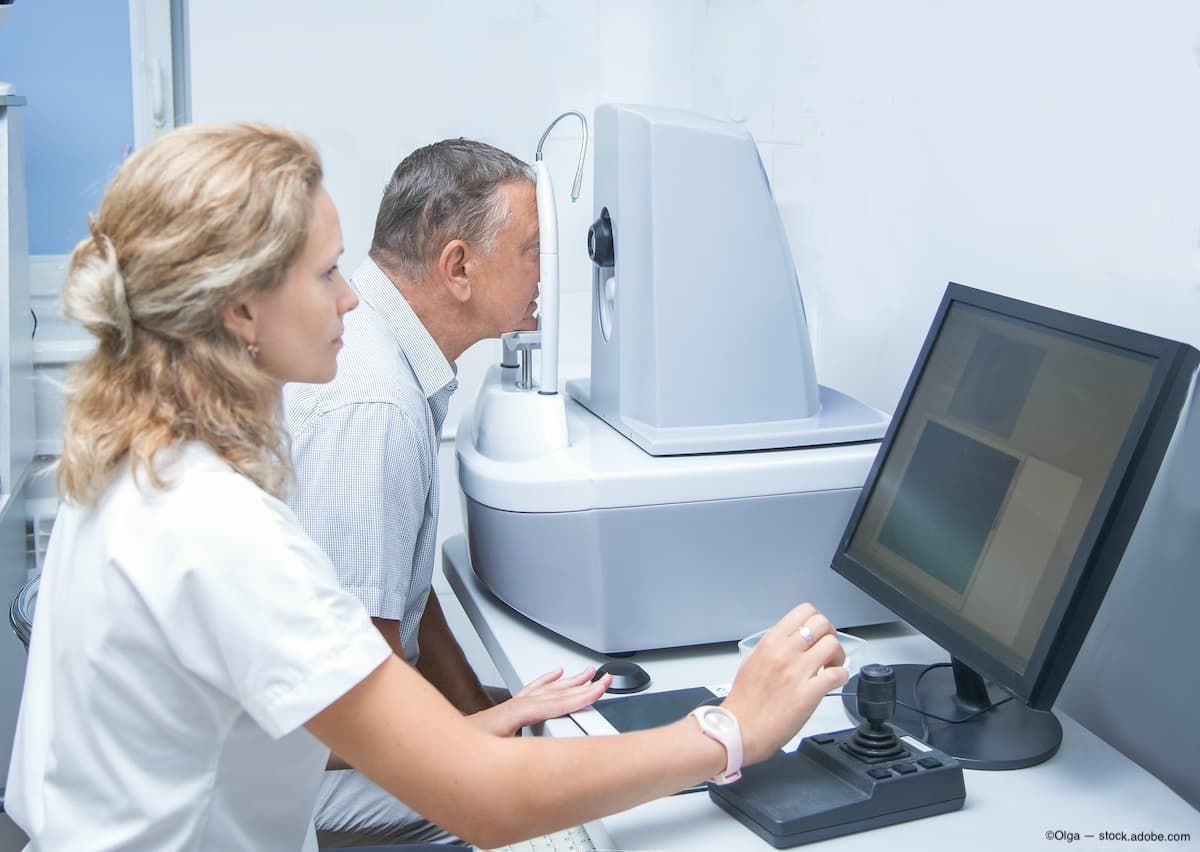- Therapeutic Cataract & Refractive
- Lens Technology
- Glasses
- Ptosis
- AMD
- COVID-19
- DME
- Ocular Surface Disease
- Optic Relief
- Geographic Atrophy
- Cornea
- Conjunctivitis
- LASIK
- Myopia
- Presbyopia
- Allergy
- Nutrition
- Pediatrics
- Retina
- Cataract
- Contact Lenses
- Lid and Lash
- Dry Eye
- Glaucoma
- Refractive Surgery
- Comanagement
- Blepharitis
- OCT
- Patient Care
- Diabetic Eye Disease
- Technology
OCT predicts eye, heart, lung, metabolic, neuropsychiatric diseases
Retinal imaging and genetics data was used to predict future disease risk in a recent study.
Image Credit: AdobeStock/Olga

Investigators at Mass Eye and Ear, Boston, and the Broad Institute, Massachusetts Institute of Technology and Harvard University, Cambridge, MA, reported that optical coherence tomography (OCT) imaging of the retina can help predict individuals’ risk for developing diseases, including ocular diseases such as glaucoma, and heart, lung, metabolic, and neuropsychiatric illnesses.
The team also identified genetic loci associated with retinal thinning that may be used to help develop personalized treatment plans and future therapies for eye diseases such as glaucoma and macular degeneration.1
First author Seyedeh Maryam Zekavat, MD, PhD, a Harvard University Ophthalmology resident at Mass Eye and Ear and postdoctoral scholar at the Broad Institute stated, “We showed that retinal images could be used to predict the future risk of both ocular disease and systemic disease. This could potentially help with disease prevention—if we know from someone’s retinal image that they are at high risk of developing glaucoma or cardiovascular disease in the future, we could refer them for follow-up screening or preventative treatment.”
The retina is a valuable resource because it is easy to visualize and image non-invasively, and retinal imaging is already a routine procedure in ophthalmology. The press release emphasized that the “new study uncovers possibilities for preventative medicine and crosstalk between ophthalmologists and other areas of medicine.”
Previous research has already shown links between retinal health and health conditions including aging, cardiometabolic diseases such as diabetes and hypertension, and neurologic diseases such as dementia, stroke, and multiple sclerosis.
Senior author Nazlee Zebardast, MD, MSc, director of Glaucoma Imaging at Mass Eye and Ear and assistant professor of ophthalmology, Harvard Medical School said, “We’ve come to realize recently that there is a lot more information that we can get from our retinal images than we thought was possible. It's really exciting to be able to see that these images, which are obtained without having to do any sort of invasive procedure, are associated with so many systemic conditions, both at a genetic level and an epidemiologic level.”
New study
The researchers analyzed data from 44,823 UK Biobank participants who had undergone OCT imaging of the retina, genotyping, and baseline measurements of health in 2010. The participants were followed for an average of 10 years.
A difference from previous research that sought to identify genes associated with overall retinal health was that this study looked at different retinal cell layers, because, according to Dr. Zebardast, “each layer of the retina is made up of different types of cells with diverse structures and functions, and we show that the thicknesses of these different layers are associated with different conditions.”
The study also pointed out the insight into the genes and biologic pathways that determine retinal health, which could be leveraged to develop future therapies. The team identified 259 genetic loci that were associated with retinal thickness.
Of particular note was that multiple systemic health conditions including poor cardiac, metabolic, pulmonary, and renal function are linked to thinning of the photoreceptor segment of the retina, though further research would be needed to confirm causality, according to the press release.
Future studies should also aim to replicate the study’s methods in more diverse populations and different age groups, since participants in the UK BioBank were predominantly white and aged 40 to 70 years old at baseline.
This study was supported by the NEI with additional support from the Hassenfeld Scholar Award from the Massachusetts General Hospital, grants from the National Heart, Lung, and Blood Institute and analysis support from the LIFE Leipzig Research Center for Civilization Diseases.
Reference
Zekavat SM, Joshery SD, Rauscher FG, et al. Phenome- and genome-wide analyses of retinal optical coherence tomography images identify links between ocular and systemic health. Sci Transl Med. 2024;16; doi: 10.1126/scitranslmed.adg4517
